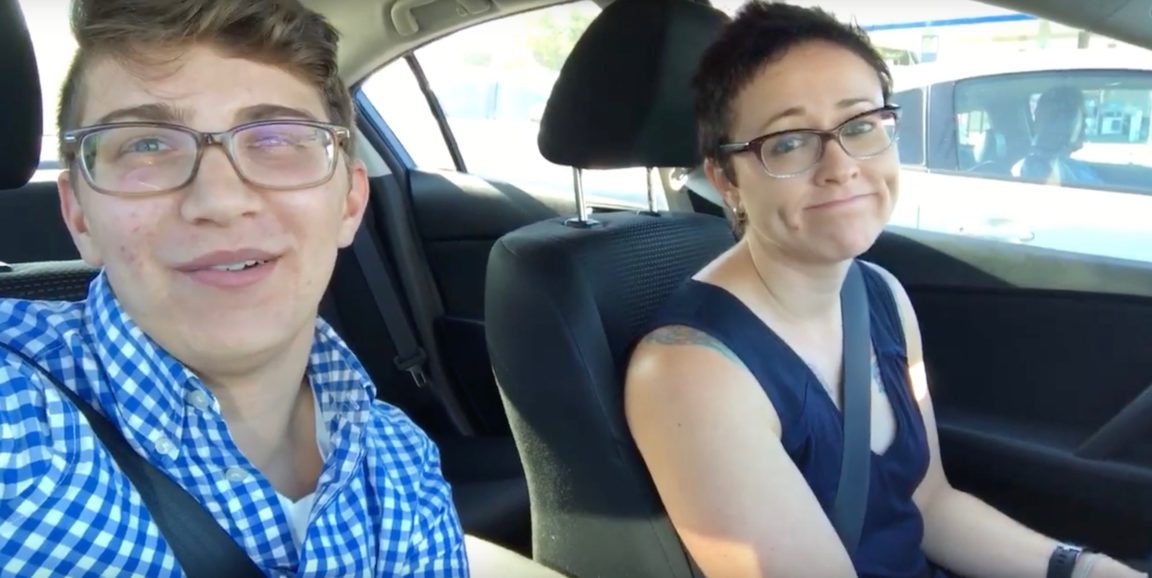In a 55-second video that is both playful and profound, patient advocates Liz Salmi and Charlie Blotner asked Michael Fratkin, MD, a palliative care doctor they know through their advocacy work, to have "the talk" with them.
"We need to have the talk with you about end of life and brain tumors and steroids and swelling, especially related to other cancers and if this looks the same or not," Blotner says at the beginning of the video, filmed while they were in the car.
Salmi jumped in: "Is dying from brain cancer different from other cancers? We just really want to know what it's like. We need to have the talk. Like, sometimes 'the talk' means how are babies made but we want to know what dying is like... all of our friends are dying, we want to know what's happening."
"It was so millennial," Fratkin told me in a conversation recently. "The way they asked. By text message video. From the car. But I think it is the future of medicine."
I think he is right. In recent years, medicine has been awash in phrases like "empowering patients" and "patient centric," intended to demonstrate how the health care system is including and deferring to patients to improve care and design research.
But it is through the day-to-day work of patients like of Salmi, Blotner, and Adam Hayden -- and their work with doctors like Fratkin of Resolution Care, who practices palliative care via telemedicine in rural Northern California -- that makes a real difference for patients.
Salmi, Blotner, and Hayden all have brain cancers. While Senator John McCain showed us how to live and die gracefully from brain cancer, these much younger patients are showing us that illness does not preclude action that can change the medical system in ways that benefit patients and caregivers.
Salmi, Blotner, and Hayden -- using technology and their own initiative -- have created networks that provide much needed support to brain cancer patients navigating similar challenges. For example, they organized monthly Twitter chats, Brain Tumor Social Media (#BTSM) for "all things brain tumor & social media."
They are also contributing to substantive medical research.
Blotner, 23, was diagnosed with a grade II astrocytoma when he was 13. Now working towards a master's degree in social work, he helps adolescents with chronic illnesses navigate the health care system and works to improve the care of future brain tumor patients as a member of the Congressionally Directed Medical Research Program, and by providing recommendations for the National Brain Tumor Society and Alliance for Childhood Cancer to steer the National Institutes of Health in implementing a new system and standard of care for survivors.
Salmi, a 39-year-old communications specialist diagnosed with a grade II astrocytoma 10 years ago has made -- and lost -- many friends with brain cancer. She is a communications strategist for OpenNotes, a movement rooted in research advocating for patients to get access to their medical provider's notes through existing online patient portals.
Hayden, 36, was diagnosed in 2016 with glioblastoma, is a working father of three young children. Along with Salmi, he is a leading member of the Brain Cancer Quality of Life Collaborative, a research collaborative funded by the Patient Centered Outcomes Research Initiative that is exploring better quality of life standards for people living with glioblastoma and other high-grade brain tumors.
After studying the medical literature, Salmi, Hayden and the collaborative recognized there was a gap in palliative care standards for people with brain cancer. They are now building a team of neuro-oncologists and palliative care clinicians (including Fratkin) to pilot possible best practices.
When Fratkin had "the talk" online with Salmi, Blotner, and Hayden, he told them with humor and kindness -- but also truth -- that dying from brain cancer can involve weight gain and puffiness due to steroids (a common palliative treatment as reducing brain swelling can help with retention of cognitive function). He also told them about the retreating inward that comes naturally as a person slows down. And he said that the choice about how long to proceed with any form of treatment, cancer focused or palliative, will be entirely theirs.
"Whether it's Hawaii or the NIH in Bethesda, whatever choice you make will be the right one for you," Fratkin said.
Patient empowerment is likely the future but it is also the present. Salmi, Blotner, and Hayden give us a model how to do it in a way that truly benefits patients.
Renata Khoshroo Louwers' first husband Ahmad died from bladder cancer in 2014. She is a writer and patient advocate who co-founded of the literary journal Months to Years.
Screenshot of Blotner, left, and Salmi from Brain Cancer Quality of Life Collaborative video




